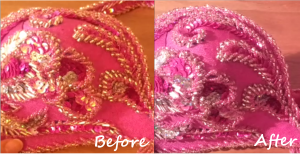In this post you will hear Avaz-e Dashti, the haunting sound of the desert. Dasht means desert in Farsi. It is a soulful longing that is heard in Dashti. It is the howling winds, and the endless quiet of the desert. All these sounds can be heard in Dashti.
Until now, we have been analysing the different sub-dastgah of Shur in a very detailed theoretical way. But this time, I want to explore an emotional, aesthetic, artistic, or intuitive way of approaching music. So I am not going to do much analysing other than telling you what scale and what notes are being played. I am doing this because Afshari, Dashti, and Avaz-e Kord (I haven’t dealt with Kord yet) are very similar. They pause and play with the same notes. And when performed by masters of Persian music they often move through these sub-dastgah sequentially depending on use of poetry, mood, and whim.



 I love gift giving. I feel it is a special time when I can think ONLY about the person that I am giving a gift to. This makes me feel good to think that I am being a good friend, girlfriend, daughter or whatever my relationship is with the person because I am showing my care and affection with this special gift. I often feel gift giving is as much fun to the gift giver as to the receiver. Seeing the joy on the gift receiver’s face gives the same joy on the gift giver’s face.
I love gift giving. I feel it is a special time when I can think ONLY about the person that I am giving a gift to. This makes me feel good to think that I am being a good friend, girlfriend, daughter or whatever my relationship is with the person because I am showing my care and affection with this special gift. I often feel gift giving is as much fun to the gift giver as to the receiver. Seeing the joy on the gift receiver’s face gives the same joy on the gift giver’s face.  Unfortunately, my eyelids don’t seem to like every type of eyeliner. My eyelids tend to be oily, and they are deep double eyelids, which means I have an eyelid that folds and creates a line, and the crease folds very deep like the photo shows.
Unfortunately, my eyelids don’t seem to like every type of eyeliner. My eyelids tend to be oily, and they are deep double eyelids, which means I have an eyelid that folds and creates a line, and the crease folds very deep like the photo shows.  I want to improve my finger cymbals or zill playing. This has been on my mind especially since I started performing with Navid. To improve my technique, I must practice playing finger cymbals, of course. But the problem with practicing finger cymbals is that they are LOUD. Yes, they are small, but they are cymbals. They are so loud that I’m sure my neighbours and landlord can get annoyed by my poor playing, and my ears start to ring. Yet when I try to practice quietly, the finger cymbals just wobble on my fingers, and I can’t “feel” it.
I want to improve my finger cymbals or zill playing. This has been on my mind especially since I started performing with Navid. To improve my technique, I must practice playing finger cymbals, of course. But the problem with practicing finger cymbals is that they are LOUD. Yes, they are small, but they are cymbals. They are so loud that I’m sure my neighbours and landlord can get annoyed by my poor playing, and my ears start to ring. Yet when I try to practice quietly, the finger cymbals just wobble on my fingers, and I can’t “feel” it. 